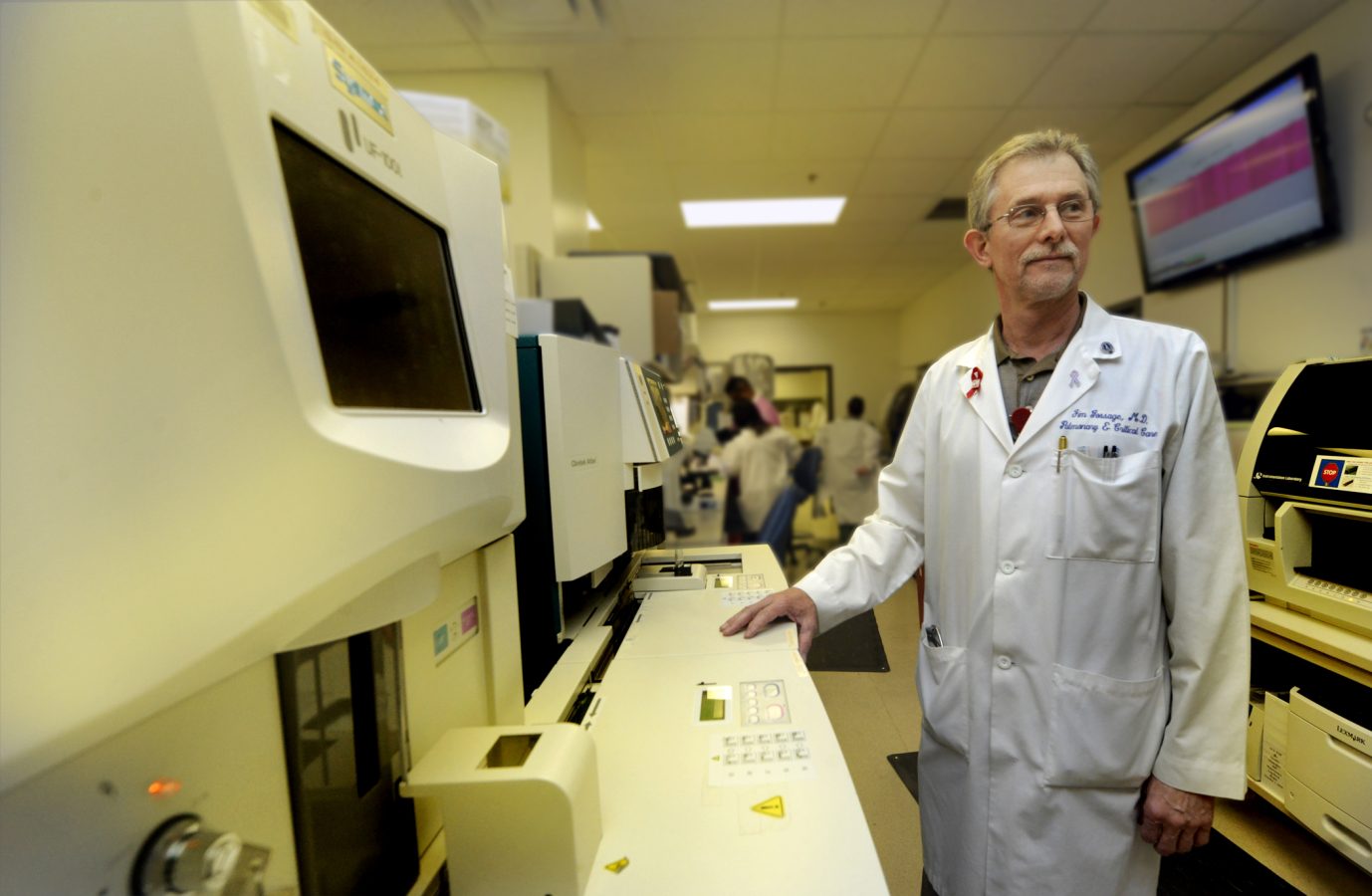AUGUSTA, Ga. – A cancer drug that helps keep tumors from growing blood vessels may help patients with a rare genetic condition in which malformed vessels increase their risk for bleeding and anemia.
Hereditary hemorrhagic telangiectasia, or HHT, puts patients at increased risk for arteriovenous malformations, or AVMs, where arteries feed directly into veins rather than into smaller and smaller blood vessels first, said Dr. James R. Gossage, pulmonologist at the Medical College of Georgia at Georgia Regents University.
Veins are ill equipped to handle the increased pressure, so blood vessel size increases along with the risk of rupture and potentially significant bleeding. Patients can experience daily nosebleeds that require weekly blood transfusions and even potentially deadly ruptures in the lungs and brain, said Gossage, Director of Pulmonary Vascular Diseases and HHT at GRHealth and Medical Director of the international foundation Cure HHT. GRHealth is one of 17 HHT centers of excellence in the United States.
Current therapies include lasering smaller AVMs and inserting coils to obstruct bleeding in larger ones. Drugs such as pazopanib may provide earlier intervention by helping inhibit several mutated growth factors, including vascular endothelial growth factor, which lead to the abnormal blood vessel formation. Mutations in the ACVRL1, ENG, and SMAD4 genes are known to cause HHT. Early laboratory evidence suggests that pazopanib may reduce nosebleeds, anemia and small AVMs in the condition that affects an estimated 1 in 5,000 to 10,000 individuals worldwide.
“We think that proteins such as VEGF are involved with the regulation of vessel formation, and in HHT, blood vessel formation is dysregulated, resulting in AVMs,” Gossage said. Earlier experience with biweekly infusions of the intravenous cancer drug bevacizumab also showed benefit, but Gossage hopes the daily pazopanib tablet will be a more convenient, less expensive, and effective option.
In a study funded by GlaxoSmithKline, at least four study sites nationally will be giving the drug to patients for 12 weeks, closely following blood counts and iron levels as indicators of reduced bleeding and shrinkage of smaller AVMs. Because the drug can raise blood pressure, patients and investigators are keeping daily tabs on those levels so dosage can be altered if needed. Patients will be followed for an additional 12 weeks to see if any improvements are sustained.
The study is enrolling HHT patients whose frequent nosebleeds are affecting their quality of life and with anemia that requires regular blood transfusions or iron infusions. About 10-20 percent of HHT patients have severe bleeding that leads to anemia; patients with milder forms tend to ramp up blood production to compensate. Women tend to be more at risk for anemia because of menstrual bleeding.
Patients most commonly present to Gossage with frequent nosebleeds that range from manageable with a tissue to blood streaming down the face. “Inside the nose is very vascular, so imagine, instead of just having little hair-like blood vessels, which healthy people would have, you have a tangle of abnormally large blood vessels,” Gossage said.
Nosebleeds tend to worsen with age, and telltale, purplish superficial AVMs, called telangiectases, frequently start popping up on the fingers, lips, and face. The spots, along with nosebleeds, the presence of a larger AVM in the organs, and a family history are the critical clinical criteria for diagnosing HHT, which can be confirmed with a DNA test.
With its wide range of symptoms, which also can include abdominal pain, migraines, and exercise intolerance, HHT can take years to diagnose. In fact, CURE HHT says only about 10 percent of patients know they have it. A patient diagnosed with an AVM at age 60 might realize that the nosebleed she has had every other day is from HHT, Gossage said.
The more AVMs the greater the chance that it’s HHT, Gossage said, particularly in certain areas. While they can be essentially anywhere, including the brain, with HHT, AVMs most commonly occur in the lungs, liver, intestines, inside the nose, and on the face, lips, and fingertips. “Almost everybody with a lung AVM has HHT,” he said.
Pazopanib is currently used for kidney cancer and soft tissue sarcomas and is under study for several other cancers, according to the American Cancer Society.
 Augusta University
Augusta University




